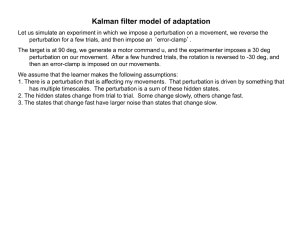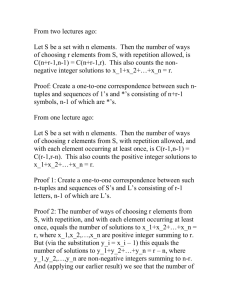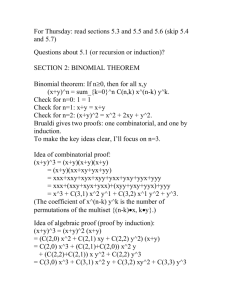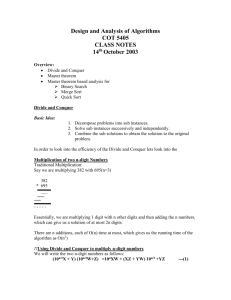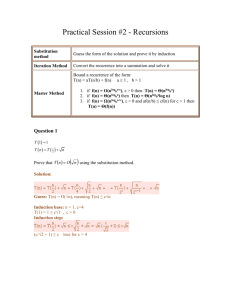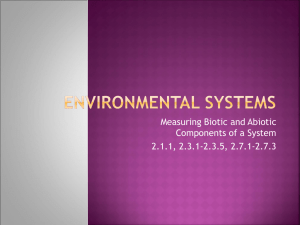HCI_ISPARK_LSS_Ecology_Worksheet1Ans
advertisement
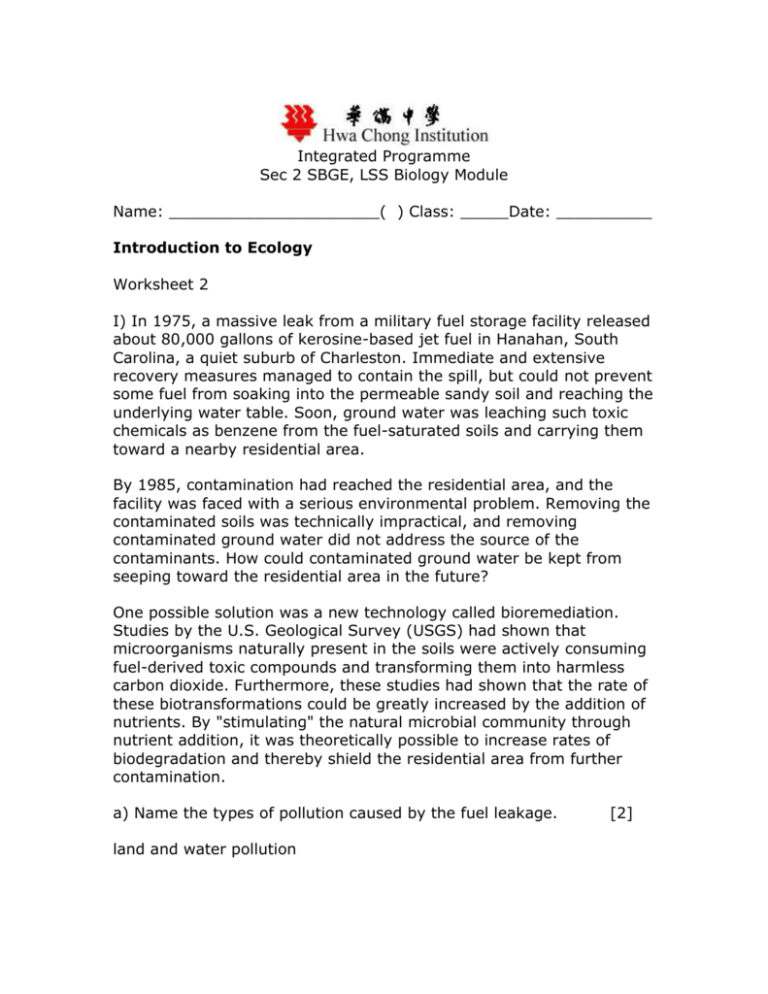
Integrated Programme Sec 2 SBGE, LSS Biology Module Name: ______________________( ) Class: _____Date: __________ Introduction to Ecology Worksheet 2 I) In 1975, a massive leak from a military fuel storage facility released about 80,000 gallons of kerosine-based jet fuel in Hanahan, South Carolina, a quiet suburb of Charleston. Immediate and extensive recovery measures managed to contain the spill, but could not prevent some fuel from soaking into the permeable sandy soil and reaching the underlying water table. Soon, ground water was leaching such toxic chemicals as benzene from the fuel-saturated soils and carrying them toward a nearby residential area. By 1985, contamination had reached the residential area, and the facility was faced with a serious environmental problem. Removing the contaminated soils was technically impractical, and removing contaminated ground water did not address the source of the contaminants. How could contaminated ground water be kept from seeping toward the residential area in the future? One possible solution was a new technology called bioremediation. Studies by the U.S. Geological Survey (USGS) had shown that microorganisms naturally present in the soils were actively consuming fuel-derived toxic compounds and transforming them into harmless carbon dioxide. Furthermore, these studies had shown that the rate of these biotransformations could be greatly increased by the addition of nutrients. By "stimulating" the natural microbial community through nutrient addition, it was theoretically possible to increase rates of biodegradation and thereby shield the residential area from further contamination. a) Name the types of pollution caused by the fuel leakage. land and water pollution [2] b)From Paragraph 1, line 6, describe what you understand by the term “Water Table”. [1] Water Table refers to ground water – source of drinking water c) From Paragraph 2, what do you think the sentence “the facility was faced with a serious environmental problem” was trying to tell you? [2] The area was having a serious pollution. The land was polluted and so was the water being poisoned and this pollution is reaching where the people are living. d) From Paragraph 3, explain what you understand by the word “Bioremediation”. [1] Use of micro-organism to break down the toxic substances to harmless substances e) From Paragraph 3, how can the microbial community be “stimulated”? [1] Adding of nutrients to encourage growth of micro-organism f) How does “stimulation” helps in “biotransformation”? [1] It speeds up the process of biodegradation of the toxic substances to harmless substances II) Species diversity Index The formula for species diversity index is as follows: D= N(N-1) n(n-1) N – total number of all organisms in the community n - number of organisms of a particular species - sum of High diversity index – - Low diversity index well-established stable community many successful species less well-established less stable community dominated by few species Compare the 3 areas in terms of diversity with the data given below: [15] Population of Species A B C D E Area 1 , Area 1 Area 2 Area 3 90 10 75 20 60 80 30 10 3 1 20 25 23 24 22 N = 90+10+75+20+60 = 255 N(N-1) = 64770 For Population A, n(n-1) = = = = = = For Population B, n(n-1) For Population C, n(n-1) 90(90-1) 8010 10(10-1) 90 75(75-1) 5550 For Population D, n(n-1) For Population E, n(n-1) Area 2 , N N(N-1) For Population A, n(n-1) For Population B, n(n-1) For Population C, n(n-1) For Population D, n(n-1) For Population E, n(n-1) Area 3 , N N(N-1) For Population A, n(n-1) For Population B, n(n-1) For Population C, n(n-1) For Population D, n(n-1) For Population E, n(n-1) = = = = 20(20-1) 380 60(60-1) 3540 = 80+30+ 10+ 3 +1 =124 = 15252 = 80(80-1) = 6320 = 30(30-1) = 870 = 10(10-1) = 90 = 3(3-1) =6 = 1(1-1) =0 = 20+25+23+24+22 = 114 = 12882 = = = = = = = = = = 20(20-1) 380 25(25-1) 600 23(23-1) 506 24(24-1) 552 22(22-1) 462 Area 1: D1 = = = Area 2: D2 = = = Area 3: D3 = = N(N-1) n(n-1) 64770 17 570 3.7 N(N-1) n(n-1) 15252 7286 2.1 12882 2500 5.2 The species diversity index of Area 3 is the highest. The area is the most established. The 5 species are equally successful The species diversity index of Area 1 is the second highest. The area is quite well established and dominated by Species A & C. Area 2 is the least well established and dominated by Species A III) The newspaper article was written by the environmental correspondent of a newspaper. It mixes scientific facts with emotional or sensational phrases beginning with the banner headline. Read the article and answer the following questions. 1. The rainforest is described as Earth’s global lungs. Explain this term. [2] The rainforest has a great number of species. They can take in oxygen for photosynthesis and produce oxygen for the Earth. 2. Explain why soil erosion takes place when the rainforest is cleared. [2] Clearing of rainforest means that the rain will have direct impact on the soil as the canopy cover is no longer around [1]. The roots of the trees that help hold the soil in are also gone and hence soil erosion can occur[1]. 3. The article uses the term biodiversity. Explain the point being made with reference to the article and also the term used. Biodiversity means the variety of organisms, such as plants, mammals, insects, reptiles and birds; this biodiversity is damaged by the fires. 4. The article is written by a journalist rather than an academic scientist. Find three phrases from the article which indicate this and explain why they might have been used. “The very thing which is ideal for mopping up the excess carbon dioxide in the atmosphere is itself being burnt” “The forest is also a kind of global lung, because as it soaks up carbon dioxide, it releases carbon dioxide” “The cattle farmers graze their herds to make hamburgers” Phrases used are metaphoric, to allow readers to understand the situation by comparing to common activities/phrases. They are also used to sensationalise the situation and create a greater concern for it.

